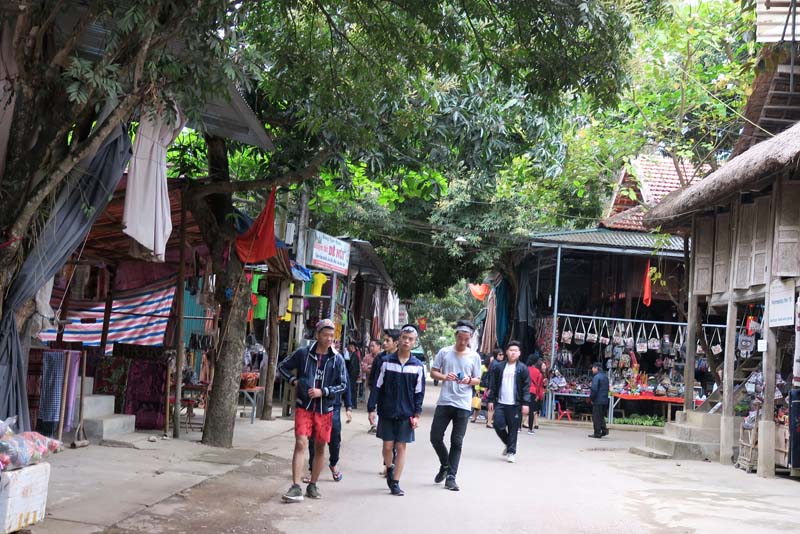
(HBO) - For a long time, Mai Chau town (Mai Chau) has been considered as a beautiful flower among Northwestern mountains by travelers, and those who have great love for tourism. With many beautiful natural landscapes and many ethnic villages with traditional identities, the town is the destination of many tourists. In December 2017, the People's Committee of the province approved the plan to raise the urban area of Mai Chau town from type V to type IV by 2020.
![]()
The alleys in Mai Chau town (Mai Chau) have been gradually renewed and upgraded to serve the tourism development.
In order to expand the space of the town area to match the urban scale, in May 2016, Mai Chau district announced the decision to approve the Scheme on the adjustment of Mai Chau general construction planning with a scale of 1/5000 up to 2025 and the vision up to 2035.
According to the new plan, the direction of town space development will follow a concentrated urban model, developing together with the road which is parallel to the national highway 15. The district's main external traffic will be the national highway 6 and national highway. The adjusted planning area of the town is 4,640.93 hectares, in which the adjusted planning area is 1,029 hectares and the expanded planning area is 3,611.93. With the new planning, Mai Chau town will have adjacent points with Dong Bang, Mai Ha, Pu Bin, Thung Khe, Noong Luong, Na Phon and Na Meo communes.
With a large land fund (after planning), Mai Chau town will have more conditions to invest resources, developing the space of urban service areas. According to the new plan, the public service works such as cultural houses, exhibitions, children's playing areas, trade centers, supermarkets, administrative agencies and so on are built synchronously. The space of the concentrated residential areas in Mai Chau town will be deployed according to the model of taking green trees and public service works such as cultural houses, children's playing areas and kindergartens as a nucleus.
The polluting production facilities such as slaughterhouses, the facilities making noise and affecting the water and air environment are also expected to move out of the urban areas. The district will convert the land funds into green parks, parking lots and high quality public facilities after relocating. The development of the town's space is carried out in the spirit of respecting and preserving the old urban structure, forming a center with a distinctive identity and versatility.
A diverse chain of eco-tourism and resort destinations concentrated in Hoa Binh city and the districts of Tan Lac, Da Bac, and Luong Son… Along with the launch of several key high-quality resort tourism projects, these developments have reshaped the landscape and enhanced the appeal of Hoa Binh as a travel destination.
Boasting diverse terrain, a mild climate, and rich natural resources, Cao Phong district is increasingly asserting its place on Vietnam’s tourism map, attracting both domestic and foreign visitors. The district is renowned for its stunning landscapes, majestic mountains, a crystal-clear hydropower lake, and the unique cultural identity of local ethnic groups.
With its pristine landscapes, unique cultural heritage of Muong ethnic minority, and an expanding range of visitor experiences, Tan Lac district of Hoa Binh has fast become a captivating destination for both domestic and international tourists.
Until now, Sung village in Cao Son commune, Da Bac district remains the only Dao ethnic community in Hoa Binh province to develop a community-based tourism model. Beyond its untouched natural landscapes, cultural identity serves as the cornerstone attraction for visitors.
Alongside the diverse cultural identities of the Kinh, Muong, Tay, Thai, Dao, and Mong ethnic people, Hoa Binh province is also renowned as the "capital" of the northwestern Vietnamese cuisine, offering unique and distinctive dishes. At festivals, during Lunar New Year (Tet), or on significant family or community occasions, special dishes are prepared, leaving a lasting impression on visitors.
A Phong Linh (Yellow Tabebuia) flower garden in Thang village, Thach Yen commune, Cao Phong district is currently in full bloom, drawing a large number of visitors.



